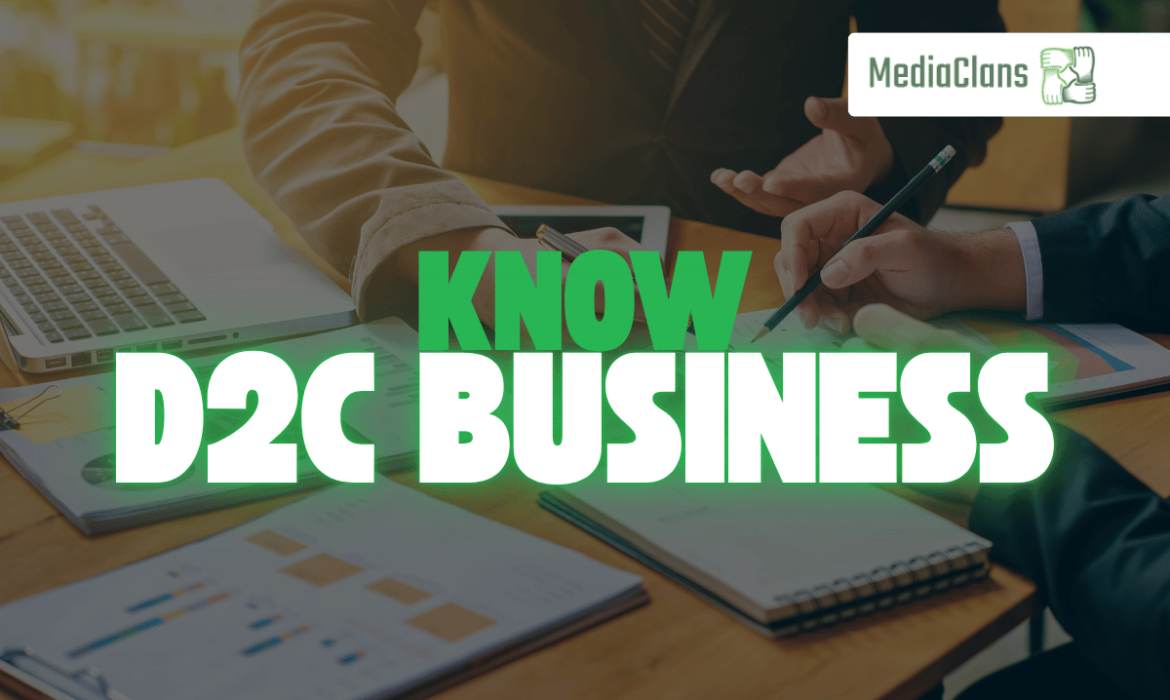In recent years, D to C business models have disrupted the traditional retail industry. With the rapid growth of online shopping, social media marketing, and digital tools, Direct-to-Consumer (D2C) brands are redefining how companies connect with their audience.
But what exactly is a D2C business? How is it different from traditional retail or B2C models? And why is it gaining so much attention in 2025?
Let’s break it down.
What is D2C Business?
D to C business, or Direct-to-Consumer business, is a model where brands sell their products directly to customers—without relying on third-party retailers, distributors, or wholesalers.
Instead of placing products on supermarket shelves or third-party e-commerce platforms, D2C brands build their own websites, manage their own marketing, and control their customer experience end-to-end.
Key Features of a D to C Business
- No Middlemen: Brands handle manufacturing, marketing, and sales themselves.
- Own E-Commerce Channel: Sales happen directly via the brand’s website or app.
- Customer-Centric Approach: Direct communication helps personalize marketing and build loyalty.
- Data-Driven Decisions: D2C businesses use real-time customer data for product development and campaign optimization.
D2C Business vs Traditional Retail
| Feature | D2C Business | Traditional Retail |
| Sales Channel | Direct to consumer via brand website | Third-party retailers |
| Customer Data | Fully accessible to brand | Owned by retailers |
| Marketing | Brand-controlled | Shared or limited control |
| Profit Margins | Higher (no middleman cuts) | Lower (retailer margins apply) |
Why D to C Business is Thriving in 2025
- Lower Costs, Higher Profits: By eliminating intermediaries, D2C brands reduce costs and improve margins.
- Personalized Customer Experience: Access to customer data allows for tailored communication and targeted offers.
- Agility & Innovation: D2C brands can test, launch, and update products faster than legacy brands.
- Digital-First Generation: Millennials and Gen Z prefer shopping from brands that speak directly to them online.
Examples of Successful D2C Brands
- boAt – India’s homegrown electronics brand that scaled massively via online D2C strategy.
- Mamaearth – A personal care brand that gained traction through social media and D2C channels.
- Lenskart – While it has an offline presence now, it started with a strong D2C foundation online.
Challenges of Running a D to C Business
- High Customer Acquisition Costs (CAC)
- Logistics and Fulfilment Complexities
- Building Brand Trust Without Retail Presence
- Scaling While Maintaining Quality and Service
How to Start a D2C Business in 2025
- Find a Niche – Solve a specific customer problem.
- Develop a Unique Product – Focus on quality and packaging.
- Build a Website – Your brand’s home base. Use Shopify, WooCommerce, or custom builds.
- Use Performance Marketing – Leverage Google Ads, Meta Ads, and influencer partnerships.
- Engage via Social Media – D2C thrives on Instagram, YouTube, and WhatsApp.
- Focus on Customer Support – Build loyalty through fast service and feedback handling.
Future Trends in D2C Business (2025 & Beyond)
- AI-Powered Personalization
- WhatsApp Commerce
- Sustainable Packaging
- Voice Commerce
- Omnichannel D2C Models
Final Thoughts
D to C business is not just a buzzword—it’s a major shift in how brands connect with modern consumers. With increasing digital adoption, rising trust in online shopping, and affordable technology, D2C is the future of eCommerce in 2025.
Whether you’re a startup or an existing brand looking to scale online, adopting a D to C strategy can give you full control over your customer experience and build long-term brand loyalty.
Need help building your D2C brand?
Partner with Mediaclans—Nagpur’s trusted digital marketing agency. From website design to full-funnel paid campaigns, we help you scale your D to C business the right way.



